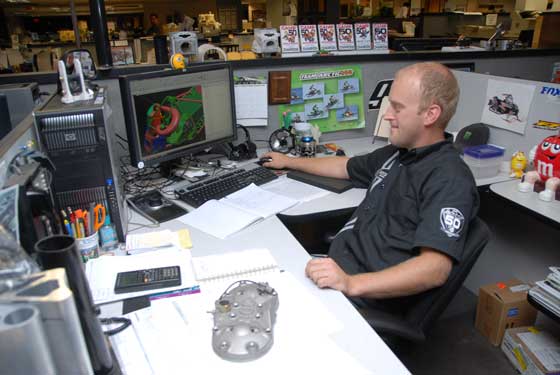
The components of Arctic Cat snowmobiles are uniquely shaped (and fit together) because someone “draws” them that way. Mike Larson is one of those guys who draws snowmobile parts – most notably components for 2-stroke engines including the exhaust, intakes, engine mounts and more.
The 31-year-old Design Engineer has spent the past eight years at Arctic Cat, plying his expertise in CAD on everything from Sno Pro race sleds to the 800 H.O. to projects that haven’t yet seen the light of day. After a lot of arm-twisting, he finally agreed to an interview.
AI: Okay, what’s your job title, and then explain what it is you actually do.
Larson: I’m a Design Engineer in the engine group. I work with a team of field engineers, dyno techs, and calibration engineers to develop engine packages. I mostly work with the exhaust on all two-stroke engines. I also work with intakes, cooling, chassis components, and engine mounting.

Most of the time Larson spends his time on the computer, but occaisionally he “spits some chips” on the mill or does the actual fabrication of a component. Here, however, he’s just pretending to work with a muffler for a 2-stroke engine so that I could get a photo of him away from his desk. Thanks Mike!
AI: How much of your time is spent drawing on CAD, versus how much time you’re working in the shop with actual material?
Larson: Most of my time is at my CAD station. I have expert metal fabricators that make my prototype expansion chambers and other parts here in house. I do find time to spit some chips on the mill but I usually leave it to the experts at the CNC.
AI: What exactly do you draw on the various engines, and which engines have you been involved with?
Larson: My first project was the 800 H.O. I had to take a custom ported cylinder and make it for production. We take a mold of the porting geometry and have it laser scanned in our Quality Assurance lab. We also design the internal geometry of the head.
I spend most of my time on exhaust. Our system has to meet EPA and sound level standards without compromising performance. This is done in conjunction with our NVH (noise, vibration and harshness) group and many hours of analysis, prototyping and testing.

AI: The new ProCross and ProClimb chassis are super tightly-packaged, with very little room underneath the hood compared to previous models. Was that a challenge for you?
Larson: It is a very big challenge, yet t’s a direction that many vehicles have taken… just look under the hood of a current automobile and compare it to a 20-year old version.
If you look under the hood of a previous generation M8 you’ll see all kinds of room. On the new ProClimb/ProCross chassis, we have just enough room to fit my chamber in the sled. We’ve had to maximize our use of the available space and utilize complicated stampings to shield the heat from electrical components and maintain an air gap between the exhaust and the all plastic.

AI: What sort of freedoms are you given when you’re drawing engine components?
Larson: I have to stick to the performance spec when it comes to the components I draw. It’s a challenge to get a production exhaust system match performance of the hand build prototype. I’ve added my ideas in form of mounting, durability (forming processes), and consistency (weld process). Not a lot of glory like the plastic designers, they get to add style and color, we engine group guys make them go fast. I’d rather be known for the speed.
AI: What part of your job gives you the greatest satisfaction?
Larson: I like to see our machines do well on the race circuits. It’s pretty awesome to know you had a part in the sled that wins the X-Games, although Tucker plays the biggest part of that success. (Laughs.)
What I like the most is when you’re on the final hour of the Hay Days stand, it’s been a long day and someone thanks us for making a particular sled or design. You can see the passion and love for the sport and you were part of the design team that made it. That’s really cool and gratifying.
AI: Is riding snowmobiles part of your job?
Larson: Riding is a part of my job, but most of the riding I do is on my own time. We do a lot durability testing at Lake of the Woods and some out west. Up north we carve a course on the lake and do hot laps for hours. We have many of expert riders where all they do is ride and wrench. So they test our designs and give us feedback for further research or new designs.
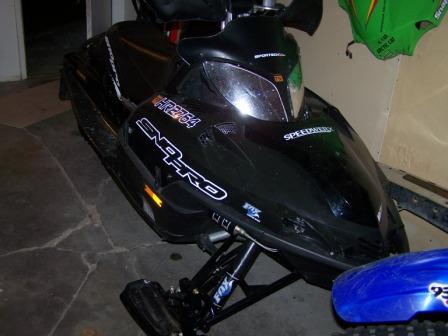
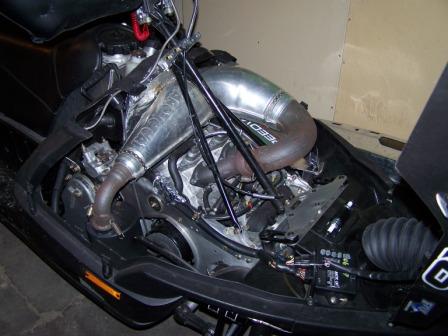
AI: Tell me about your own sled.
Larson: I have my 1998 ZR 600 LE which collects a lot of dust right now. It was my first new machine, so it’s hard to part with. I also have a 2005 Sno Pro race sled powered by a 700 EFI with a custom pipe, cooling, fuel tank, oil tank, and many other parts. It was a long project. I like building custom “Hot Rod” machines in my spare time. Next up is an 800 racer or maybe a custom mini sled.
AI: What was your educational background, and how did you get the job?
Larson: I have my degree in Mechanical Design from Rice Lake, Wis. I applied three times before finally getting an interview for a position in the Drafting Dept. here at Arctic Cat. I worked with all the designers and engineers to create detailed prints. I transitioned to working with the race team creating designs for the 2005 Sno Pro and was their go-to guy for a while. After the 2008 racer development I moved to the engine group.
AI: You come from an extended family that’s had big involvement in snowmobiling. Talk about that, and how much you were into snowmobiling/Arctic Cat as a kid.
Larson: I’ve had green blood for many years. My great uncle Del Ray, had an Arctic Cat shop in St. Croix Falls. My Dad and I would hang out there all the time. Del was an expert mechanic and all-around awesome guy. He’s the one that got me into the snowmobiling scene. He was in with all the local racers and had a lot of great stories. He found me my first machine, a 1980 Panther, I’d ride the wheels off that thing, then he’d fix it and would never let us pay him.
I always wanted to race, but Del said I needed two big bushel baskets of money: one to buy the sled and the other to keep it going. I guess I never had a big enough basket so I decided to design them instead. If you’re in the St. Croix Falls area, just about every Arctic Cat person remembers Del.
AI: Okay, you didn’t get to race but you did have some direct involvement with racing, right?
Larson: Yeah, I have been a mechanic for racers in the ISOC circuit, and as I mentioned before I’ve been on the design team for the race sled for since the 2005 model. I’m a huge race fan, whether it’s sleds, motocross, Moto GP, or the ultimate World of Outlaws. Someday I’d like to drive a 410 outlaw. I’d say our old 800 snocross mod sleds were pretty close to that level of crazy.
AI: What’s your all-time favorite Arctic Cat and why?
Larson: I really like my 700 racer, the new Pro Cross 800 is pretty sweet, but I think my new favorite sled is going to be the one on my CAD Station right now. You’ll have to wait for that though. (Laughs.)
AI: Hey, that’s not fair to tease like that! Tell me a good Roger Skime story.
Larson: We were on our way to Duluth one year and stopped at the gas station in Erskine, Minn., on Hwy 2. We were struggling to find something for me to eat that was gluten-free. I found some fruit and chips. Meanwhile Roger was talking to the cashier about my food allergy. Before you knew it, he had her willing to take us home and cook us a gluten-free supper. I stuck with the fruit and we hit the road. But that is so typical of Roger, to strike up a conversation with a stranger who then immediately realizes what a great guy he is.
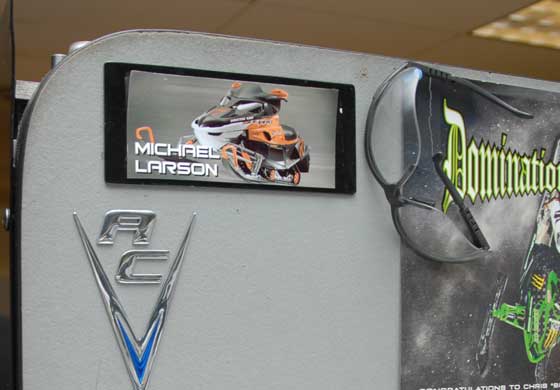
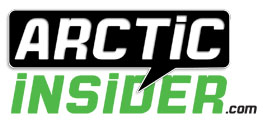


For those of us who are still reaping the benefits of the 2008 and on race chasis, we thank you. Keep up the good work. It is very much appreciated!
That custom 700 racer is one sweet sled and it rips! Must have some good engine parts in it 😉
Visited with Mike last year at the 50th, great guy! He gave me his card with personal info.
Great interview. Awesome props to uncle Del!! I am sure he is proud of what you have accomplished. He told me the same thing with the 2 big bushel baskets full of money, but I wasnt smart enough to listen. HAHA. Good job Mike
Good job mike!!! I have to agree with you about Del, He was the best brother-in-law I ever had,great to work with.Your job now Mike is to keep those Cats purring, to keep his legacy alive .
We are very proud of you. You found your dream job and went after it.
You love snowmobiling and Arctic Cats. You work hard and love what you do. Keep up the good work.
Mike you make the whole family proud of you. My father Delray was a great guy and loved to help any youngster that was willing to learn. I know this now on even a more personal note since his passing in 2006 his grandson Dustin Krueger (my son) has been attending school to follow in his footsteps. Dustin was so lucky to have been able to learn so much from such a talented man in the short time they were together. I can only hope he has your success in doing a job he truly loves!!!
Hey Mike ~ I have worked with both your Mom and Dad and know you were brought up understanding work ethic and the importance of loving what you do … it’s apparent by reading this article that those two elements are part of the key to your success! We are Arctic Cat people and it’s heartwarming to have connections to someone who is behind the magic of snowmobiles! Thanks for everything you do!
Congratulations on finding a job that you like doing. You were a good student in school and it is comforting to know that your former student has found a career that he enjoys. Much happiness to you!